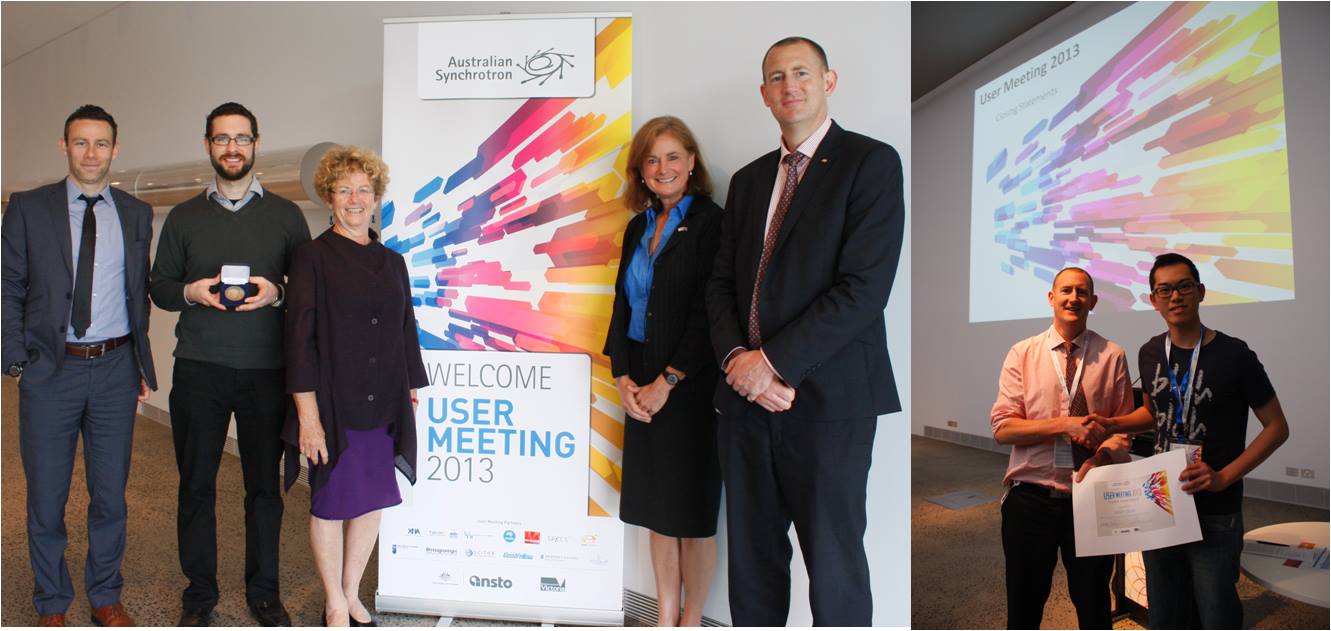 The Australian Synchrotron held an intensive week of review and stakeholder meetings in November, celebrating a successful years’ research, and culminating with the annual User Meeting.
The Australian Synchrotron held an intensive week of review and stakeholder meetings in November, celebrating a successful years’ research, and culminating with the annual User Meeting.The User Meeting was held in the award-winning National Centre for Synchrotron Science, 21-22 November 2013. This year’s event marked 10 years since the first Australian Synchrotron user meeting was held to discuss the proposed capabilities and potential applications of the new facility, then in the early stages of construction.
The 2013 User Meeting was organised by the User Advisory Committee chaired by Dr Deborah Lau (CSIRO). The highly anticipated event attracted 215 synchrotron experts, users and prospective users, over three concurrent sessions, and three plenary sessions.
Meeting highlights for 2013 included: novel combinations of techniques including MX and SAXS: the growing capabilities of the Australian Synchrotron Imaging and Medical Beamline (IMBL); the industry-science relationship in synchrotron collaborations; and the inaugural Stephen Wilkins Thesis Medal award.
The world’s widest synchrotron x-ray beam is now operational at the Australian Synchrotron’s Imaging and Medical Beamline (IMBL). At the end of the IMBL’s 140 metre path within a clinical satellite building, the beam can measure up to 4cm high and 50cm wide. The power behind the beam is the ‘silver wiggler’: a $1.3 million (AUD) superconducting multi-pole wiggler magnet delivering the extremely high energy x-rays required for radiotherapy research.
Speakers and program:
Plenary speakers Prof Brian Stephenson (APS), Prof Harald Reichert (ESRF) and Prof Ted Baker (University of Auckland) inspired audiences with accounts of the latest science at each their facilities and plans for the next generation of light sources.
Upgrade pathways at both the ESRF and the APS provide a clear direction for the future of storage ring facilities and set some challenging goals for the Australian Synchrotron upgrade plans. Prof Ted Baker spoke about the sometimes unexpected discoveries in research as exemplified by his group’s studies of a Gram positive pathogen cell wall anchor pilin, which revealed a sortase-mediated covalent linkage mechanism through a highly conserved lysine. This is a very different pili assembly mechanism from that seen in Gram negative bacteria.
Awards:
The Australian Synchrotron Stephen Wilkins Thesis Medal was awarded to Stephen Dubsky for his thesis work at Monash University entitled “Four-dimensional x-ray velocimetry for biological applications”. Anita Hill from CSIRO presented the medal. Family and friends of Stephen Wilkins were present for the medal ceremony and Stephen Dubsky’s thesis work presentation that followed.
This year’s User Meeting Student Poster Prize was awarded to Adam Quek from Monash University for his poster about “Small angle X-ray studies of human plasminogen”. Adam will receive complimentary travel, accommodation and registration to attend the Cheiron School in Spring-8 in Japan next year.

Images
Image 1: Left: Simon Wilkins (son of Steve), Dr Stephen Dubsky, Linda Wilkins (wife of Steve), Dr Anita Hill (CSIRO) and Prof Andrew Peele. Right: Prof Andrew Peele and Adam Quek
Image 2: The User Meeting 2013 dinner was held in Exhibition Space of the on-site National Centre for Synchrotron Science, 22 November
More photos of the User Meeting 2013: Click here (facebook).
